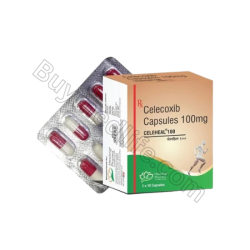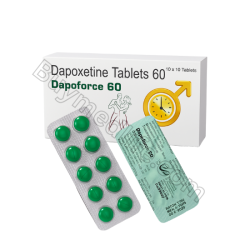Gabapentin 300 Mg, Used For, Side Effects, Reviews & Price
-550x550.png)
- Stock: In Stock
- Brand: Healing Pharma
- Model: Gabapentin 300
- SKU: GBPTN300mg
- Active Ingredient: Gabapentin
- Treatment: Pain Releif
- Alcohol: Don't Drink
- MPN: G78P68T30
Available Options
Gabapentin 300 mg represents a widely prescribed dosage form of the renowned anticonvulsant medication Gabapentin, encapsulated in powdered form. This oral capsule is primarily indicated for alleviating nerve-related discomfort and managing chronic neurological conditions such as epilepsy and seizure disorders. Clinical research has also explored its potential in easing acute inflammatory pain and migraines, further broadening its therapeutic scope.
Relevant Product Strengths
Therapeutic Uses of Gabapentin 300 mg
Gabapentin is available in numerous formulations, including oral solutions, immediate-release tablets, and extended-release capsules. Below are the principal uses of the Gabapentin 300 mg capsule:
Neuropathic Pain
Neuropathic pain arises when nerves are damaged or compressed due to illness, injury, or prolonged medical conditions. Physicians often prescribe Gabapentin 300 mg to manage this type of pain in adults.
One of the most common causes, Postherpetic Neuralgia (PHN)—a complication of shingles triggered by the Herpes Zoster virus—is effectively managed using this medication. Similarly, patients with diabetic neuropathy often benefit from Gabapentin’s nerve-calming properties.
Partial (Focal) Seizures
In individuals with epilepsy, Gabapentin 300 mg assists in controlling partial or focal seizures, stabilizing abnormal brain activity, and reducing seizure frequency.
Acute Inflammatory Pain
Although not yet recognized as an on-label indication, studies have demonstrated Gabapentin’s potential to ease acute inflammatory pain, proving beneficial as an adjunctive treatment in many clinical settings.
Chronic Migraine
Gabapentin 300 mg has shown promise in both preventing and relieving migraine attacks, helping to mitigate the intensity and frequency of debilitating headaches.
Usage Directions
Follow the exact dosage and administration instructions provided by your physician. Gabapentin 300 mg must be swallowed whole with a glass of water—do not crush or open the capsule, as doing so may interfere with its release mechanism and effectiveness.
Mechanism of Action
Pain perception originates when neurotransmitters send signals from affected nerves to the brain. Gabapentin acts by modifying these neurotransmitter pathways, inhibiting pain signals before they reach the receptors responsible for pain sensation. This alteration reduces discomfort and calms overstimulated nerve activity, promoting relief from neuropathic pain.
Possible Side Effects
Common side effects associated with Gabapentin 300 mg may include:
Drowsiness or fatigue
Weakness or dizziness
Constipation
Weight gain or increased appetite
Double vision
Nausea or vomiting
Dry mouth
Memory difficulties
Sore throat
Headache or back pain
Diarrhea
Heartburn
Fever
Joint discomfort
Anxiety or mood changes
Ear pain
These effects are usually mild and temporary. If they persist or intensify, medical attention should be sought immediately. A complete list of potential adverse reactions can be provided by your healthcare provider or pharmacist.
Alcohol Interaction
Alcohol consumption can significantly enhance the sedative effects of Gabapentin, leading to dizziness, confusion, and impaired motor coordination. Combining the two increases the risk of injury and intensifies side effects such as drowsiness and slowed reflexes. For safety and optimal results, avoid alcohol while taking this medication.
Precautions and Warnings
Do not use Gabapentin 300 mg if you are allergic to Gabapentin or any of its components.
Inform your doctor if you suffer from mental health conditions such as anxiety or depression, as certain antidepressants may interact negatively with Gabapentin.
Avoid engaging in activities that require alertness, such as driving or operating machinery, immediately after consumption.
Continue taking the medication as prescribed—do not discontinue abruptly without consulting your healthcare provider.
Where to Buy Gabapentin 300 mg
The most reliable destination is Buymedlife.com, a trusted platform offering Gabapentin 300 mg at competitive prices. All medicines are authentic, accessible, and delivered at affordable rates. Customers also enjoy a 10% discount on every purchase.
FAQ
1. What is Gabapentin 300 mg used for?
Gabapentin 300 mg is primarily prescribed to treat neuropathic pain caused by nerve damage and to manage partial (focal) seizures associated with epilepsy. It is also utilized, under medical supervision, for conditions such as migraines and acute inflammatory pain.
2. How should Gabapentin 300 mg be taken?
The capsule should be swallowed whole with a glass of water, preferably at the same time each day. It can be taken with or without food, depending on your doctor’s instructions. Do not crush, chew, or split the capsule, as this may alter its effectiveness.
3. Can Gabapentin 300 mg cause drowsiness?
Yes. Drowsiness, dizziness, and fatigue are among the most common side effects of Gabapentin 300 mg. Avoid activities requiring alertness, such as driving or operating heavy machinery, until you know how the medication affects you.
4. Is it safe to consume alcohol while taking Gabapentin 300 mg?
No. Combining alcohol with Gabapentin increases the risk of excessive sedation, poor coordination, and dizziness. This combination can be dangerous and should be strictly avoided during treatment.
5. Can I stop taking Gabapentin 300 mg suddenly?
No. Abrupt discontinuation may lead to withdrawal symptoms or an increase in seizure frequency. Always consult your doctor before stopping or adjusting the dosage; a gradual tapering schedule is usually recommended.


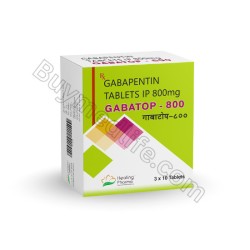
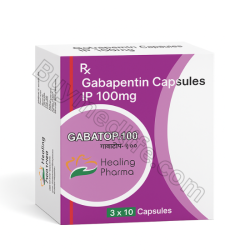

-250x250.png)

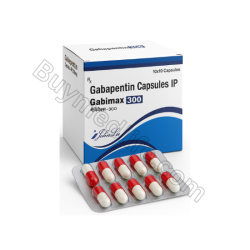
![100 Mg Hiforce Oral Jelly [Sildenafil Tablet], Uses, Dosage, Reviews 100 Mg Hiforce Oral Jelly [Sildenafil Tablet], Uses, Dosage, Reviews](https://buymedlife.com/image/cache/catalog/ketu/173-250x250.png)
